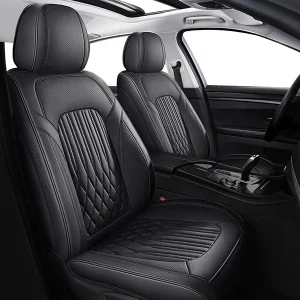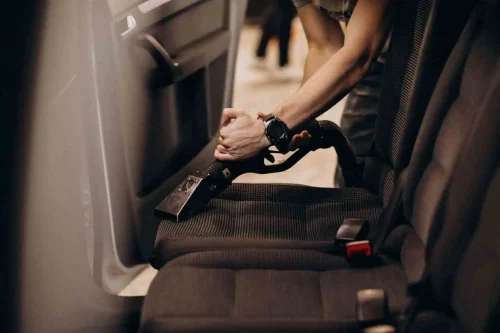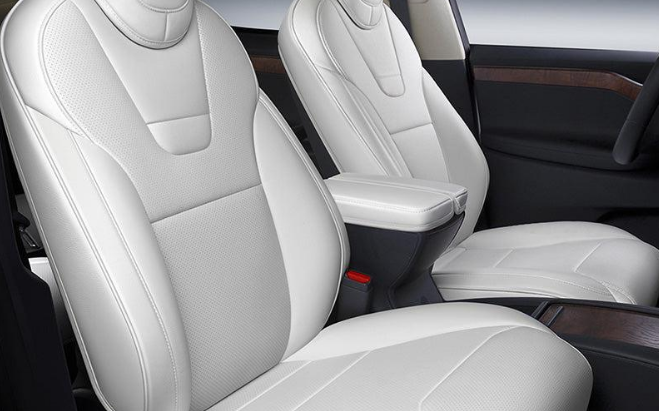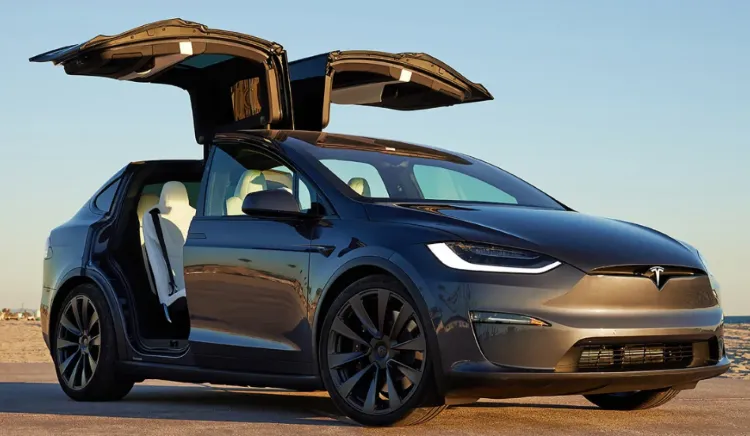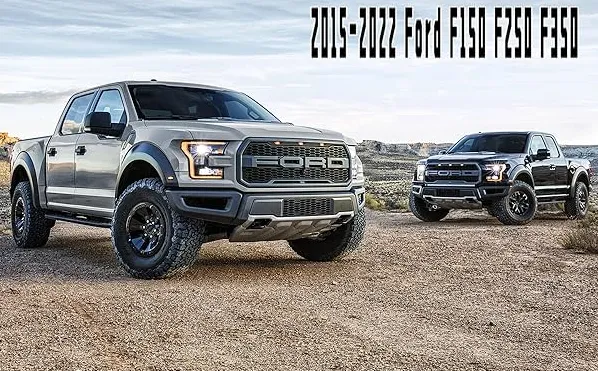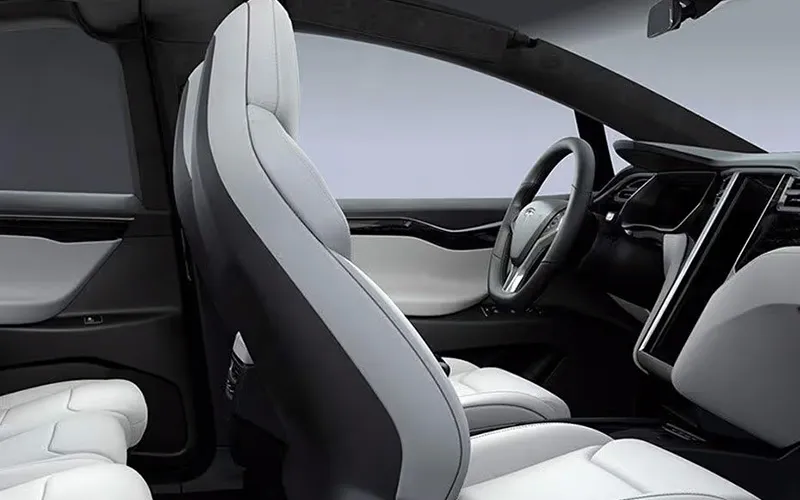Seat covers often top the list when upgrading or protecting your Tesla Model X interior. However, with safety features like seat-integrated side airbags and built-in occupancy sensors, not every seat cover is a safe choice.
And there’s another Tesla to consider—seat materials vary. Whether you have white vegan leather that stains easily or black upholstery that heats up in the sun, the wrong cover could cause more harm than good.
So the question isn’t just “Will it fit?” “Will it interfere with your car’s safety systems or damage the original upholstery?” This guide breaks down Tesla’s lies, how Tesla seat materials play a role, and how to choose safe and smart covers.
Tesla Model X Seat Safety Systems Explained
Side Airbags: Built Into the Seats, Not the Doors
Tesla integrates side airbags directly into the seat bolsters. These airbags deploy during side impacts and need a clear, unobstructed zone to open correctly. Some third-party seat covers—especially generic or universal-fit they ‘rens—can block this deployment, reducing the airbag’s effectiveness.
Occupancy Sensors: Safety Beyond Seat Belts
Inside the seats are occupancy and weight sensors, helping the vehicle detect if someone is sitting down, whether the passenger is a child or adult, and when to activate seatbelt alerts or turn off passenger airbags. An overly padded or poorly fitted seat cover can interfere with these sensors and trigger incorrect readings.
Tesla Model X Seat Materials: What You Need to Know
Tesla has phased out traditional “all leather” and now uses synthetic “vegan leather” materials across its entire lineup. In the Model X, you’ll typically find:
- White Vegan Leather: Stylish and futuristic, but easily stained and prone to UV wear.
- Black Vegan Leather: Practical and durable, but retains more heat in the summer.
- Cream Vegan Leather (older models): Elegant, but slightly more sensitive to abrasion and discoloration.
These premium materials look and feel upscale but require more thoughtful pairing with seat covers. For example:
- Rough or non-breathable fabrics can wear down the material’s finish.
- Thick or heat-trapping covers may cause discoloration or surface damage.
- Mismatched or ill-fitting covers can shift, rub, or leave pressure over time.
Choose seat covers that complement, not contradict, your seat material.
How to Tell if a Seat Cover is Safe Material
1. Look for Safety Certifications
Always check for certifications like:
- FMVSS 302/208 (Federal Motor Vehicle Safety Standards – U.S.)
- ECE R16 (European crash safety compliance)
These labels indicate that a seat cover has been tested and proven compatible with airbag deployment and sensor accuracy.
Look for terms like “Airbag-Compatible“ or “SRS-Compatible”—especially near the side “eams”
2. Evaluate S” art Design Features
Safe seat covers typically include:
- Breakaway stitching or tear seams at the airbag deployment zones
- Thin, breathable material that won’t obstruct the seat sensor, won’t slip, and a lining to prevent cover movement on slick vegan leather.
Avoid full-wrap covers that don’t provide a designated airbag release area.
The Risks of Non-Compatible Seat Covers
Blocked Airbags = Higher Injury Risk
If a seat cover interferes with airbag deployment, you could lose critical protection in a side-impact crash. Even a few milliseconds of delay can increase injury risk.
Misreading S” at Sensors”. Insufficient fit or excessive padding can result in:
- Passenger airbags stay active when a child is seated
- Seatbelt alerts not functioning
- Incorrect detection of empty seats
Tesla’s Seat Materials
Cheap or poorly designed covers can:
- Leave pressure marks or creases
- Cause heat buildup and surface breakdown
- Leads to stains, especially on white vegan leather
Installation Tips: Get It Right from the Start
won’tcertified seat covers won’t workHere’sstalled incorrectly. Here’s how to avoid trouble:
- Align side airbag cutouts with the seat’s deployment zones
- Avoid thick padding around the seat base and backrest
- Keep sensor zones clear, especially the lower seat area
- Clean seats before installation—trapped dirt or moisture can damage the upholstery over time
Why Choose Covers4Car for Tesla Model X?
1. Built Specifically for Tesla Model X
Our covers aren’t one-size-fits-all. We use laser measurements and real seat data to design seat covers that perfectly match Tesla’s unique seat shape and safety zones.
2. Gentle on Tesla Seat Materials
We use automotive-grade fabric that’s breathable, waterproof, heat-resistant, and non-abrasive. Tesla’s fabric is ideally suited to protect your vegan leather seats without damaging them.
3. The AiTesla is compatible with DesiThey’rey. It includes engineered breakaway seams to ensure the side airbags deploy without delay. All materials are tested to meet or exceed FMVSS and ECE standards.
4. Easy DIY Installation
Our kits come with simple, step-by-step instructions and video guides. You don’t need tools or experience—just about an hour of your time for a flawless install.
Frequently Asked Questions (FAQ)
Q1: Does Tesla allow or recommend using seat covers?
Tesla doesn’t officially endorse aftermarket seat covers. That said, thousands of Model X owners choose to use them—especially those designed with airbag compatibility and seat material protection in mind. Covers4Car’s custom-fit seat covers are engineered to work seamlessly with Tesla’s safety systems.
Q2: Can full-wrap seat covers still be airbag-safe?
Yes—but only if they’re designed with precision tear-away seams that align with the side airbag deployment zones. All Covers4Car seat covers labeled as airbag-compatible are built to meet industry safety standards and undergo detailed fit testing for Tesla models.
Q3: Will seat covers damage white Tesla vegan leather over time?
Only if the materials are poorly chosen. Covers4Car uses color-safe, breathable, and soft-touch fabrics that are gentle on Tesla’s vegan leather. We specifically avoid rubber backings or dark dyes that could transfer heat or stain lighter upholstery, especially on white seats.
Final Thoughts
Good seat covers don’t just look nice—they protect what matters most: your safety and investment. With Tesla’s advanced seats packed with sensors and side airbags, choosing the wrong cover could lead to serious problems.
Look isn’t an AI-compatible product, sensor-safe, or built for Tesla’s vegan leather materials. A great cover should feel like part of the car, not an afterthought. Brands like CoversTesla make it easier by offering covers explicitly designed for the Model X—no compromises, no guesswork.

